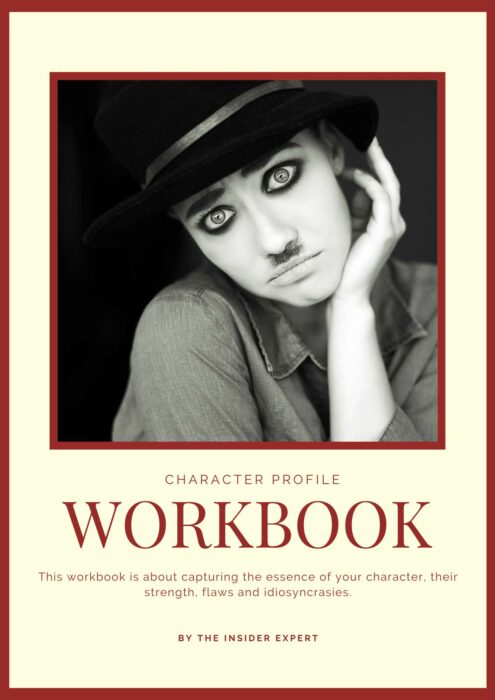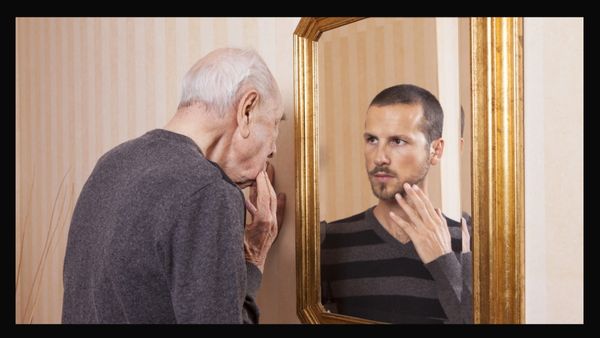You’ve realised you must create a strong character your readers will identify with and remember, but you’re unsure how. It is true that one of the most essential parts of writing a compelling book is making characters that are strong and interesting. The success of your book depends on how well your characters are written. This is because your characters are the heart and soul of your story and the driving force behind your plot, and without them, your plot falls flat.
When readers care about a character, they care about that character’s story and journey. This is because strong, well-rounded, interesting, and memorable characters can capture readers’ imaginations and help them feel emotionally connected to the story.
The worst thing about a character is not that you hated them but that you found them boring and uninteresting. If a reader stops caring about a character, that character is no longer necessary or relevant to the plot.
You can make your character memorable by making him, or her someone everyone loves or someone everyone hates. Give your character a personality and a life story that matches what you want your readers to feel so they’ll keep reading—make them hate or love the character.
Discover everything about your characters that you can before you write your story. If you get stuck at any point, they will write your dialogue for you.
Michael J. Kannengieser
Creating characters that captivate readers takes a lot of work, time, and creativity. I will share 8 KEY STRATEGIES you can do to make compelling characters for your book.
- # 1: Create a clear character concept
- # 2: Give your character depth and complexity
- # 3: Develop a Backstory
- # 4: Give your Characters goals and motives
- # 5: Create strong relationships
- # 6: Create a dynamic Character Arc
- # 7: Use Dialogue to reveal your Characters
- # 8: Show don’t Tell
- Parting Advice
# 1: Create a clear character concept

The first step in building a compelling character is to define who they are. This entails developing a complete physical description of the character’s physical appearance, personality traits, motivations and goals, mannerisms, speech patterns, and quirks.
When you begin writing about your character, you must have a clear image of them. This enables you to comprehend their intentions, behaviours, and responses. Their physical description should be consistent throughout the book and unique enough to distinguish the character in the reader’s imagination.
While developing characters, avoid using stereotypes. Stereotypes are overused and, in some cases, offensive. Instead, create unique characters that stand out and have their own voice.
You should be able to explain your character in one or two sentences, such as “a driven detective with a tragic past” or “an adventurous young orphan seeking their place in the world.” This concept will be the foundation for anything else you do while developing your character.
For Gone Girl, I knew Nick and Amy had to be very believable, so I made iPod playlists for them, and knew their Netflix queues. I wrote scenes of them in childhood from other people’s points of view: A scene of Amy in high school, written from her friend’s POV, or Nick’s kindergarten teacher writing about parent-teacher conference night. Stuff I knew I’d never use, but would help me flesh them out. I do that a lot when I’ve hit a writer’s block — it keeps me writing and sometimes helps solve a problem. Amy’s Cool Girl speech started as a writing exercise, but that one I liked so much I kept it for the book. Once I have a first draft, then the actual real work for me begins, because then I can see the novel as a whole and see what needs work. I do tons of rewriting; it’s where the book becomes a book.
Gillian Flynn
Here is a lesson from The Ultimate Character Development Course. In it, we examine the steps involved in creating a character profile and how to construct a background/backstory for your character that will relate them to their current circumstances.
To help you create a captivating profile, I am giving you this fabulous FREE 62-page interactive CHARACTER PROFILE WORKBOOK that will assist you in developing incredible characters for your readers to download.

Workbook Instructions
STEP 1. Click the “Download Your PDF Handout Button.” It will redirect you to a new page where you can click the download icon to save this PDF Handout to your computer. Create a folder specifically for saving your ideas and save your PDF template in it.
STEP 2. Open the downloaded PDF handout in a PDF viewer
STEP 3. Save your files in your handout’s ideas computer folder so you can refer to them again and again.

M1-S313: The Ultimate Character Development Course

In this course:
- You will learn how to create irresistible characters and understand how to use their flaws, character arcs, profiles, backstories, strengths and weaknesses.
- Included are amazing handouts such as 175 different Character Types, Character Strengths, and Character Weaknesses. We also discuss the Emotional Triggers that cause your character to react in certain ways, as well as What makes a Great Character for your readers.
# 2: Give your character depth and complexity

You don’t want your characters to be one-dimensional. Characters with a lot going on inside themselves give the story more depth. A strong character feels very natural, yet with all the depth and complexity that comes with that. Readers want to be able to relate to the personality of your character and see themselves in their problems and successes. To do this, think about what makes your character human, like their sense of humour, vulnerability or insecurities, strengths and weaknesses, virtues and desires.
It is essential to give your characters flaws and weaknesses that make them more human and easy to relate to. These flaws could be physical things like a “scar” or a disability or emotional stuff like “insecurity” or “anxiety”. Use these flaws to make your story more exciting and full of conflict.
Show how your character acts when faced with problems and how they get past them. Think about how they get along with other characters and how that makes them who they are.
The more complicated and exciting your character is, the more readers will be drawn to them. The character’s personalities should fit with what we know about them from their backstory.
When writing a novel a writer should create living people; people not characters. A character is a caricature.
Ernest Hemingway
# 3: Develop a Backstory

You need to know your character inside and out. Start by creating a backstory for your characters that explains why they behave the way they do. Their backstory should be relevant to the story and help readers understand your character’s motivations.
The backstory should include details about the character’s childhood, family life, education, and past experiences.
- Where did they come from?
- What life events shaped them into who they are today?
This will help your readers understand what drives them, their motives, fears, and desires. It can also help to determine how they will react in certain situations.
Understanding your character’s past is essential for giving them depth and complexity, which helps your readers connect with and believe in them.
When writing a backstory, the most important thing to remember is to keep it from taking over the whole story. Your backstory should only explain the character’s behaviour, attitude, and personality and should relate to what the character is doing now.
Creating characters is like throwing together ingredients for a recipe. I take characteristics I like and dislike in real people I know, or know of, and use them to embellish and define characters.
Cassandra Clare

M1-S313: The Ultimate Character Development Course

In this course:
- You will learn how to create irresistible characters and understand how to use their flaws, character arcs, profiles, backstories, strengths and weaknesses.
- Included are amazing handouts such as 175 different Character Types, Character Strengths, and Character Weaknesses. We also discuss the Emotional Triggers that cause your character to react in certain ways, as well as What makes a Great Character for your readers.
# 4: Give your Characters goals and motives

Your character’s actions and decisions are driven by what they want and why they want it.
Their goals and motives for doing things should be related to who they are or what they did in the past/their backstory. They should be straightforward and easy to measure, so the reader knows what the character is trying to do and why. For instance:
- What do they want?
- Why do they want it?
- What are they willing to do to achieve their goals?
These goals could be external, like “saving the world” or “winning a competition”, or internal, like “finding happiness” or “accepting yourself.” As a writer, this knowledge about their motivation and goals will help you make a multi-dimensional character that readers can relate to and empathise with.
You take people, you put them on a journey, you give them peril, you find out who they really are.
Joss Whedon
# 5: Create strong relationships

Characters do not exist in a vacuum. Relationships between characters can tell a lot about who they are, their personalities and what happened to them in the past. By making characters have relationships with each other, you can give their past more depth and create tension and conflict.
- Demonstrate how they interact with other characters
- Develop and explore how these relationships work.
Strong relationships, whether romantic, between family members, or between friends, can give your characters more depth and move the plot forward.
Think of your main characters as dinner guests. Would your friends want to spend ten hours with the characters you’ve created? Your characters can be loveable, or they can be evil, but they’d better be compelling.
Po Bronson
# 6: Create a dynamic Character Arc

A powerful character changes significantly during the story. This transformation is known as the character’s arc, and it should be clearly defined and carried out throughout the book. Character arcs are how your characters change emotionally or psychologically throughout the story.
Your character arc is a journey your character takes throughout the storyline to help them grow and develop. It also gives the plot a sense of progression.
Think about your character’s starting point and what he or she needs to do by the end of the story. Your character should begin their journey in one place, grow, change, evolve, and finish up at a different place. Their journey should be organic and make sense based on the character’s backstory, goals, and motivations.
Throughout the book, your character should change and grow. This may be accomplished through your character’s experiences or through their relationships and interactions with other characters. But remember that the changes in their arc should fit with the character’s backstory and personality, and readers should feel like the changes were earned and satisfying.
The plot is no more than footprints left in the snow after your characters have run by on their way to incredible destinations.
Ray Bradbury

M1-S313: The Ultimate Character Development Course

In this course:
- You will learn how to create irresistible characters and understand how to use their flaws, character arcs, profiles, backstories, strengths and weaknesses.
- Included are amazing handouts such as 175 different Character Types, Character Strengths, and Character Weaknesses. We also discuss the Emotional Triggers that cause your character to react in certain ways, as well as What makes a Great Character for your readers.
# 7: Use Dialogue to reveal your Characters

One of the best ways to show who a character is and how they think is through their dialogue. The way a character speaks, their tone, and the words they use can reveal a lot about their personality, values, attitudes, motives and emotions. Use dialogue to show how your character reacts to different situations and interacts with other characters.
Your character’s dialogue should be consistent with their personality and show their thoughts and feelings.
It can also be used to reveal their backstory and to move the plot forward.
Dialogue should be natural and should avoid cliches or overly dramatic lines.
Be a sadist. No matter how sweet and innocent your leading characters, make awful things happen to them ― in order that the reader may see what they are made of.
Kurt Vonnegut
# 8: Show don’t Tell

Actions speak louder than words. Use the character’s actions to reveal their personality and motives. Showing the reader via your character’s actions and behaviour rather than telling them is an essential writing concept, but it is particularly vital in character development. For example:
- Instead of telling your readers that your character is brave and courageous, show them your character taking risks.
- If your character is deceptive and dishonest, show them lying or using others to get what they want.
- Instead of saying, “Samantha was a kind person,” show her doing something kind, like helping an elderly person across the street.
Use action (what they do) to show what they’re good at (their strengths) and what they’re bad at (their flaws) and to show how their character arc changes.
The more you can demonstrate rather than describe your character’s story, the more compelling and unforgettable they will be.
Using descriptive language may help bring your character to life. Consider utilising sensory details to describe how they look, how they move, and how they act.
Be sure not to discuss your hero’s state of mind. Make it clear from his actions.
Anton Chekhov
Parting Advice

In conclusion, I have to say making strong characters takes time and effort, but it’s worth it because it’s a crucial part of successful storytelling.
You can create characters that readers will connect with and care about by starting with a clear idea of who they are, giving them depth and complexity, making them relatable, giving them a clear character arc, and using dialogue and actions to show who they are.
Remember that readers will care more about your story right to the very end if they are invested in your characters. Following these guidelines, you can create characters that captivate readers and make your story come alive.
The character that lasts is an ordinary guy with some extraordinary qualities.
Raymond Chandler

M1-S313: The Ultimate Character Development Course

In this course:
- You will learn how to create irresistible characters and understand how to use their flaws, character arcs, profiles, backstories, strengths and weaknesses.
- Included are amazing handouts such as 175 different Character Types, Character Strengths, and Character Weaknesses. We also discuss the Emotional Triggers that cause your character to react in certain ways, as well as What makes a Great Character for your readers.
